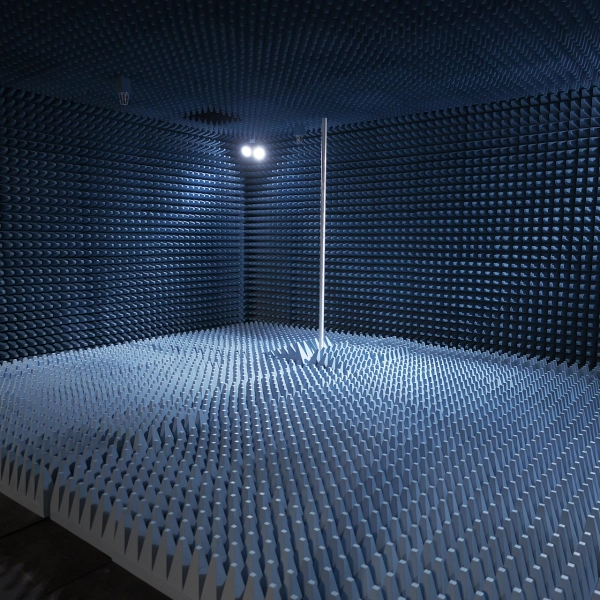With new anaechoic chamber, VALOR is the first test-as-a-service solution to offer massive MIMO OTA validation
Viavi Solutions has expanded its Chandler, Arizona-based Viavi Automated Lab-as-a-Service for Open RAN, or VALOR, testing facility, with massive MIMO testing capabilities.
The VALOR lab now has a radio frequency-shielded anechoic chamber from ETS Lindgren, plus two additional customer labs. The additional of the anaechoic chamber means that VALOR can now lay claim to being the first test-as-a-service offering that can support over-the-air (OTA) validation for massive MIMO and beam-forming.
Viavi said that VALOR can support system-level massive MIMO performance testing for up to 16 parallel spatial layers.

VALOR is federally funded through the National Telecommunications and Information Administration (NTIA)’s Public Wireless Supply Chain Innovation Fund. The test facility was opened last fall. VALOR is aimed at filling a need for pay-as-you-go, flexible, accessible and automated testing-as-a-service for Open Radio Access Network (Open RAN) technologies. Its capabilities include interoperability, performance and security testing.
In addition to the RF chamber for massive MIMO OTA testing, two additional labs are now available. Viavi said that VALOR customers can access more than 500 test cases that are compliant with O-RAN Alliance’s working groups 4, 5 and 11 and the O-RAN Test and Integration Focus Group (TIFG), as well as 3GPP specifications.
“This expansion addresses the growing demand for our innovative Open RAN Lab-as-a-Service offering, which helps democratize Open RAN testing for technology vendors by providing them with a comprehensive, on-demand test suite throughout the entire product lifecycle,” said Erik Probstfield, Viavi Solutions’ senior director of VALOR. “With the new RF Chamber, we are excited to offer OTA testing that will help accelerate O-RU commercialization and innovation.”
In other test news:
-Privately-held Dekra had its annual press conference and reported high-level numbers on its business for last year. The company said that it “remained on track in 2024, again growing its business in a volatile economic and geopolitical environment.”
Dekra’s global revenues grew nearly 5% to 4.29 billion euros, the company said. Dekra also grew its core workforce by 800 employees to 33,000. The testing, inspection and certification company has a total workforce of around 48,000, it noted. In total, some 48,000 experts work for the world’s leading non-listed testing, inspection, and certification organization.
Dekra CEO Stan Zurkiewicz said that the company was “able to ensure robust revenue and earnings growth in another year of substantial economic tensions,” due to its focus on “key megatrends” including future mobility, sustainability, cybersecurity and artificial intelligence.
–Anritsu said that it has expanded the analysis bandwidth and added a tracking generator option to its handheld Field Master Spectrum Analyzers. A new software option can expand existing instrument’s analysis bandwidth to 150 megahertz, which Anritsu says is the “widest capture range in any handheld instrument.” Anritsu said that its complimentary MX280005A IQ Signal Master software has been updated to support the wider capture bandwidth, and noted that the expansion in analysis bandwidth also benefits the instrument’s Real Time Spectrum Analyzer (RTSA).
-Meanwhile, Rohde & Schwarz announced this week that it has boosted military spectrum monitoring capabilities with new, easily transportable systems that are “compact and weatherproof with toolless installation.”
-The O-RAN Software Community, or O-RAN SC—which is sponsored by the O-RAN Alliance and operated by the Linux Foundation, has two new software releases that are aimed at strengthening collaboration across the Open RAN ecosystem. The J and K software releases “enhance integration between the O-RAN SC and the OpenAirInterface (OAI), enhance integration with Intel FlexRAN reference software, provide a more robust platform for RAN Intelligent Controller (RIC) application developers, and introduce an improved simulator for researchers,” the group said.

It added that the releases also address issues including interoperability, security, and scalability.
“Open-source innovation is critical to accelerating the adoption of open and intelligent RAN, and projects like the O-RAN SC are poised to lead the way,” said Arpit Joshipura, GM for networking, edge and IoT at the Linux Foundation. “The work being done in this community is essential in reducing resources required for commercial and product offerings during the transition to next-generation technology. The recent releases represent the next step in that journey.”
–Keysight Technologies unveiled a scalable, PXI-based solution focused on security testing for chips and embedded devices. “Traditional security testing often involves cumbersome setups with multiple disparate instruments, leading to increased complexity, longer test times, and potential inconsistencies in results,” the company said in a release, adding that its embedded security testbench solution provides “a unified and efficient comprehensive device security analysis platform.”
–Emerson, which now owns NI, announced that the annual NI Connect conference will be held at the end of this month at the Fort Worth Convention Center in Texas. This year’s event will include keynotes from Qualcomm, the Texas Rocket Engineering Lab at the University of Texas, and electric air taxi company Archer Aviation, among others.

